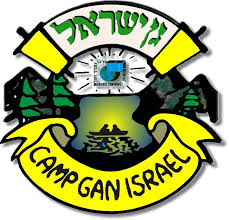Makos 13a (2)
Thanks to Eli Chitrik
- We mentioned the Machlokes of Rashi and Tosfos in our Mishnah if Min Ha’Torah a Kohen can marry a Chalutza.

Rashi follows the opinion that a Chalutzah is Biblically prohibited to a Kohen. This prohibition, is not stated explicitly in the Torah, rather it is derived from the Issur of a Gerusha.
Tosfos maintains that a Chalutzah is prohibited to a Kohen only Rabbinicaly.
2. We started to discuss the concept of if a person is chayav Kareis can he ask Beis Din to give him Malkus to rid himself from the Kareis? Assuming he can, it would only work if the Beis Din was granted the ability (not physically) to administer proper Malkus for it to count as an atonement to cancel the Kareis.

this image has no connection to the text.
But there is no such Beis Din today that has that power since we do not have a members of the Beis Din that have received a proper “Smichah”!
Whip for Malkus
This concept was argued in great detail about 450 years ago as part of an overall argument that split gedolei Yisroel into two camps:

(Parts of this portion were taken from this website.
Thank you Moshe Rosenfeld) You’re welcome.
- After the Spanish expulsion, many Jews remained in Spain, practicing their Judaism in secret, while publicly appearing to be Christians. Thousands of these Marrano Jews eventually escaped to areas where they could practice their religion with relative freedom, yet they were haunted by the sins they had committed in previous years.
1492
Many were concerned that they would never escape their more serious sins, many of which carried the punishment of Kareis. Although they had become true baalei tshuvah, they lived in fear of their ultimate day of judgment when they would have to give a reckoning for their actions and face the serious consequences.
As chief Rabbi of Safed, Rabbi Yaakov Beirav came up with an original solution to the problem. He proposed the creation of Jewish courts that would carry out the punishment of Malkus – lashes, which releases someone from the punishment of Kareis. There was one serious problem with this proposal. In order to create Jewish courts that can exact these punishments, one must have dayanim who have received a special semicha that can be traced to Moshe Rabbeinu.
- The Rambam taught that if the sages in Eretz Yisroel would agree to be somech (ordain) one of themselves, they could do so, and that the man of their choice could then ordain others. For a year, Rabbi Yaakov Beirav discussed the halachic issues of re-establishment institution of semicha with the scholars of Safed. After much discussion the scholars at Safed came to the conclusion that Rambam’s view was correct, and that there was a pressing need to re-establish the Sanhedrin. In 1538 twenty-five Rabbis met in an assembly at Safed and ordained Rabbi Yakov Beirav, giving him the right to ordain others who would then form a Sanhedrin.
After sending a delegation to Jerusalem, Rabbi Yaakov Beirav expounded on Shabbat before all the scholars of Safed the halachic basis of the re-establishment of semicha and its implications, with an intent to dispel any remaining doubts. On hearing of this event, approximately two hundred scholars, most of the scholars in Eretz Yisroel, also expressed their consent. Rabbi Yaakov Beirav then ordained a few other Rabbis, including the chief Rabbi of Jerusalem (the Mahralbach), Rabbi Yoseph Karo, Rabbi Moshe of Trani, Rabbi Yosef Sagis, Rabbi Yoshiyahu Pinto, Rabbi Abraham Shalom and Rabbi Israel de Curial. Rabbi Yoseph Karo later ordained Rabbi Moses Alsheich, and Alsheich ordained Rabbi Hayyim Vital around 1590.
To be Continued….





